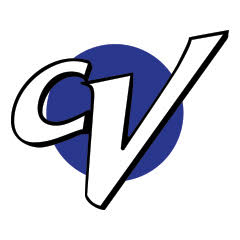by Rich Savitt
“I’m riding to the green tent,” said one of the cyclists to the official repeating the necessarily simple instructions his coach had given him as he lined up in the concrete canyons of downtown Long Beach for his turn at the 500 meter time trial on Shoreline Drive. Green was the color of the canopy covering the timing equipment at the finish line.
This past week I had the opportunity to volunteer as a cycling official at the Special Olympics World Games. The officiating crew was a mixture of local USA Cycling officials like myself, some from across the nation and some international (Netherlands, Germany, India) with Special Olympics experience. Although key members of the Games Organizing Committee (GOC) and technical support are professional employees of the Special Olympics International, I am one of 30,000 volunteers that have been mobilized for Special Olympics World Games all over LA.
The event follows International (UCI) regulations and rules specific to Special Olympics. During a quick orientation meeting the day before competition, I receive my uniform and credentials. We also get a dose of Special Olympics principals and a few tips on how to interact with the athletes and coaches to minimize miscommunication or cultural offense. For example, eye contact is very important and gesturing should be done with fingers together and palm facing up instead of pointing. The athletes may have the intellect of a child, but they are not to be treated as children as many are adults.
Dignity and inclusion are the name of the game. Competition is designed to establish ability levels during preliminary events and division participants into groups of no more than eight athletes of similar capability for final competition. Not coincidentally, the podium at Special Olympics accommodates eight places (gold, silver, bronze to the top three and participation ribbons to the others). Equally important is a requirement on the athlete to make an “honest effort” during those preliminary heats. For time trials, a performance improvement of more than 15% between preliminary and final could get them disqualified.
It is very exciting to be on the venue the first day of competition and see all the delegations arriving. There are a total of 178 athletes from 34 countries in cycling, USA, Libya, Greece, Cyprus, Great Britain, Costa Rica, Russia, Germany, India, Pakistan, Israel, Iran, UAE, Morocco, Belgium, Netherlands, Burkina Faso, Ecuador and Uruguay to name a few. The quality of racing machines are equally diverse. Some are single speed. Some are mountain bikes. Some are carbon fiber racing bikes. Some are “town bike” type cruisers. Some are tricycles (depending on the cause, some level of motor skill impairment often accompanies the intellectual impairment). Likewise the skill level of coaches varies from delegation to delegation and a fair amount of mentoring is taking place with coaches meetings and coaching clinics throughout the week. During the pre-event coaches meeting, the sport technical director (leader of our crew) emphasized that we (coaches, officials and athletes) were going to all be part of a single team throughout the week to make this the best experience possible for the athletes. Coaches of all delegations looked after each other’s athletes and equipment and tools were shared where needed.
Everyone is very friendly and encouraging. High-fives and fist-bumps seem to be universally understood gestures. One morning while walking from the car park to the venue, a Long Beach pedestrian, seeing my uniform, asked if I was working with Special Olympics. I said “yes” and she reached out to shake my hand and thank me. All of the volunteers are equally cheerful from early morning to late evening.
The entire week was an inspiration. The competitors were inspiring. The official in me was inspired to be working with other accomplished officials. The event promoter in me was inspired to see the attention to logistics and detailed planning behind this event. The competition did not disappoint either. There were several close races which ended in sprints. But the non-competitive finishes were just as much fun to watch, riders beaming with pride and waving to their delegation as they crossed the line or brows furrowed in what for them was intensity of effort regardless of the speed. Check out the photos on Google+.

